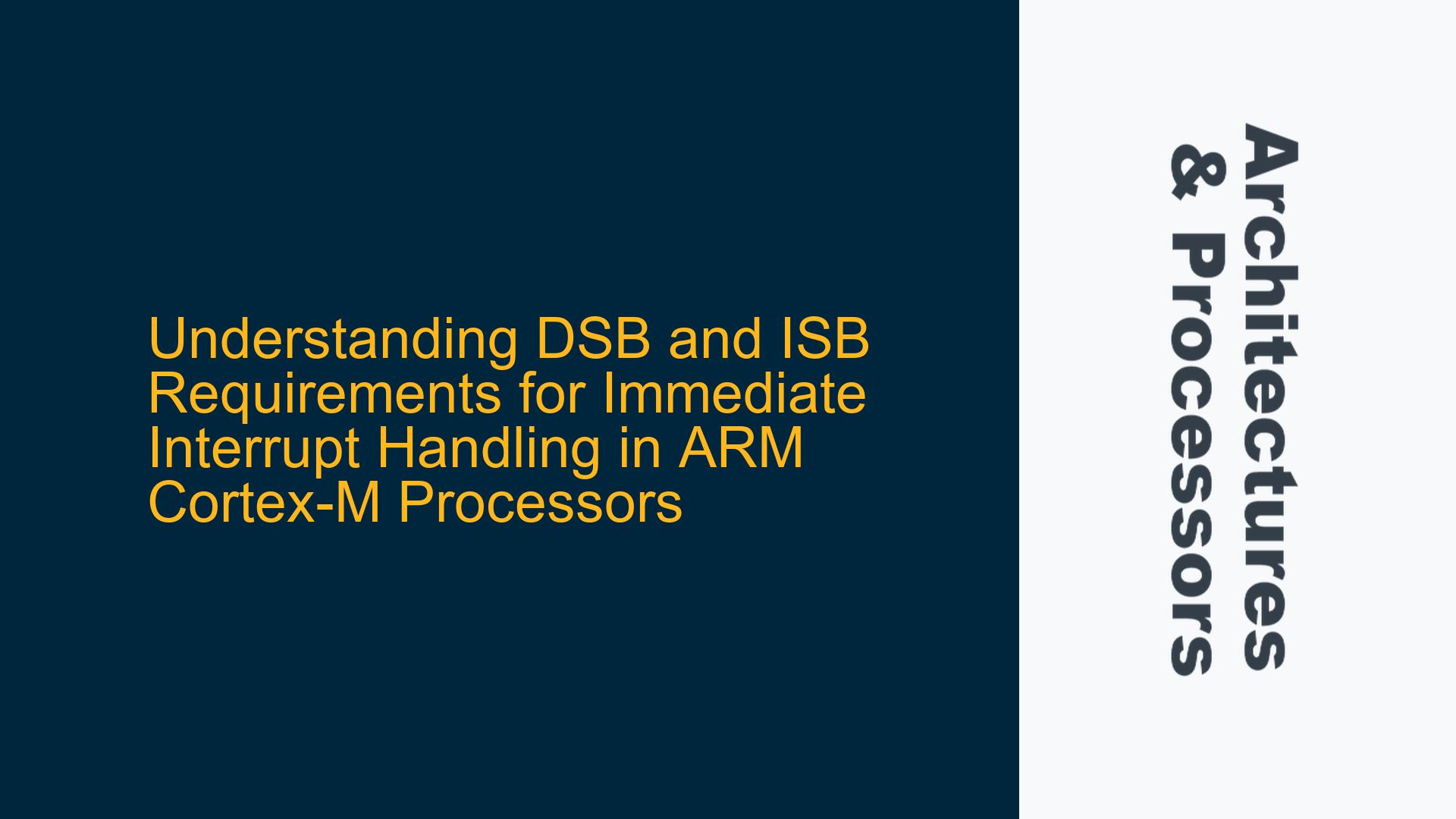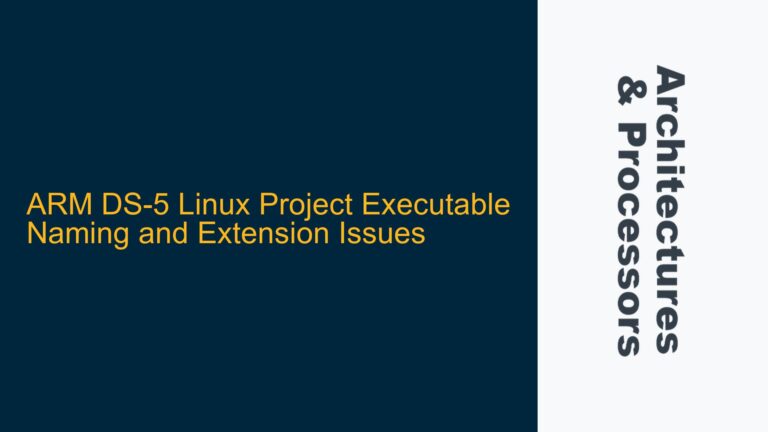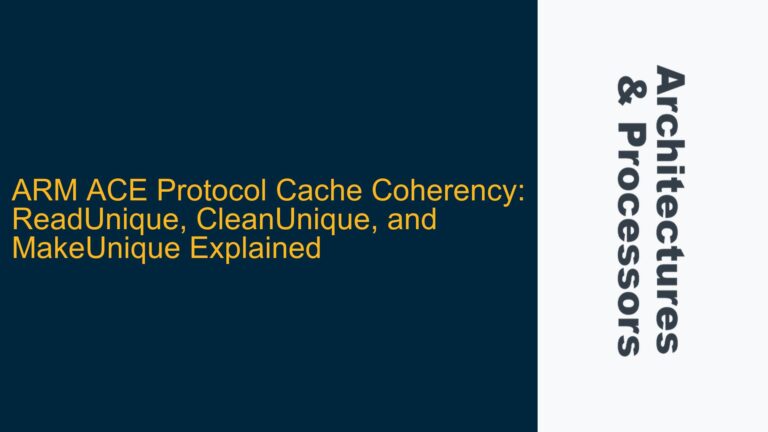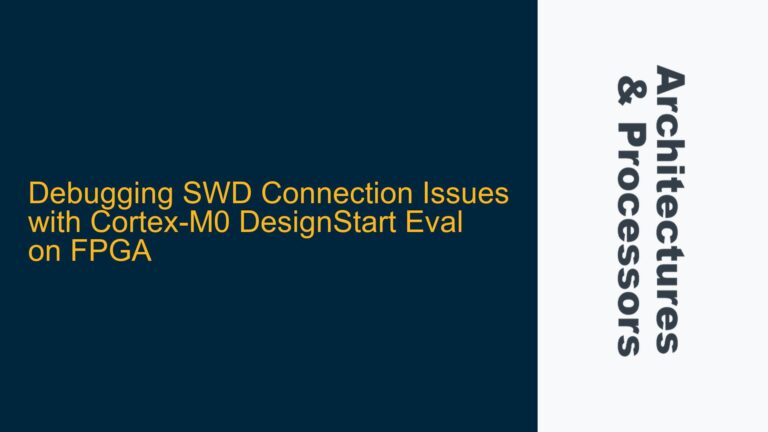ARM Cortex-M Interrupt Handling and Memory Barrier Requirements
In ARM Cortex-M processors, ensuring that interrupts are handled immediately after being pending is critical for real-time systems. The ARM architecture provides two memory barrier instructions, Data Synchronization Barrier (DSB) and Instruction Synchronization Barrier (ISB), to manage the order of memory operations and instruction execution. The DSB instruction ensures that all memory accesses before the barrier are completed before any subsequent memory accesses begin. The ISB instruction ensures that the processor pipeline is flushed, so that all instructions following the barrier are fetched after the barrier has been executed.
The need for DSB and ISB after pending an interrupt, such as PendSV, arises from the requirement to guarantee that the interrupt is taken immediately. This is particularly important in scenarios where the timing of interrupt handling is critical, such as in real-time operating systems (RTOS) like FreeRTOS. The ARM application note on memory barriers (DAI0321) specifies that these barriers are architectural requirements, but their necessity can vary depending on the specific Cortex-M processor and the memory types involved.
For example, in the Cortex-M7 processor, writes to the Nested Vectored Interrupt Controller (NVIC) already exhibit DSB barrier behavior between strongly ordered and device memory. However, this behavior does not extend to normal memory, such as stack variables. This distinction is crucial because it affects whether additional DSB and ISB instructions are necessary to ensure immediate interrupt handling.
Memory Barrier Behavior in NVIC and Cortex-M7 Specifics
The NVIC in ARM Cortex-M processors is responsible for managing interrupts. When an interrupt is pending, the NVIC ensures that the interrupt is serviced as soon as possible. However, the timing of when the interrupt is taken can be influenced by the memory barrier instructions used in the code. The ARM application note (DAI0321) states that NVIC writes inherently include a DSB barrier for strongly ordered and device memory. This means that when an interrupt is pending, the NVIC ensures that all previous memory accesses to strongly ordered or device memory are completed before the interrupt is taken.
However, this inherent DSB behavior does not apply to normal memory, such as stack variables. In the Cortex-M7, normal memory accesses can be reordered or delayed, which can lead to situations where the interrupt is not taken immediately after being pending. This is where the explicit use of DSB and ISB instructions becomes necessary. The DSB ensures that all memory accesses, including those to normal memory, are completed before the interrupt is taken. The ISB ensures that the processor pipeline is flushed, so that the interrupt handler is executed immediately after the barrier.
The Cortex-M7 processor, with its more complex memory system and higher performance capabilities, may require more careful handling of memory barriers compared to other Cortex-M processors. The presence of caches and write buffers in the Cortex-M7 can further complicate the timing of memory accesses, making the use of DSB and ISB instructions even more critical in ensuring immediate interrupt handling.
Implementing DSB and ISB for Reliable Interrupt Handling in Cortex-M7
To ensure reliable and immediate interrupt handling in the Cortex-M7, it is essential to implement DSB and ISB instructions correctly. The following steps outline the best practices for using these memory barriers in Cortex-M7 systems:
-
Use DSB After Pending an Interrupt: After setting the pending bit for an interrupt in the NVIC, insert a DSB instruction. This ensures that all previous memory accesses, including those to normal memory, are completed before the interrupt is taken. This step is crucial for ensuring that any data that the interrupt handler depends on is up-to-date.
-
Use ISB After DSB: Following the DSB instruction, insert an ISB instruction. The ISB ensures that the processor pipeline is flushed, so that the interrupt handler is executed immediately after the barrier. This step is necessary to prevent any stale instructions from being executed after the interrupt is pending.
-
Consider the Memory Type: Be aware of the memory types involved in your system. If your code primarily accesses strongly ordered or device memory, the inherent DSB behavior of the NVIC may be sufficient. However, if your code accesses normal memory, such as stack variables, explicit DSB and ISB instructions are necessary to ensure immediate interrupt handling.
-
Benchmark and Test: The impact of memory barriers on system performance can vary depending on the specific application and the Cortex-M7 implementation. It is essential to benchmark and test your system to ensure that the use of DSB and ISB instructions does not introduce unnecessary latency or performance bottlenecks.
-
Consult the ARM Documentation: Always refer to the latest ARM documentation, such as the ARM Cortex-M7 Technical Reference Manual and the ARM application note on memory barriers (DAI0321), for the most up-to-date information on memory barrier requirements and best practices.
By following these steps, you can ensure that your Cortex-M7 system handles interrupts reliably and immediately, even in complex real-time applications. The use of DSB and ISB instructions, when implemented correctly, provides the necessary guarantees for memory access ordering and instruction execution, ensuring that your system behaves as expected under all conditions.
In conclusion, the need for DSB and ISB instructions after pending an interrupt in ARM Cortex-M processors, particularly the Cortex-M7, is driven by the requirement to ensure immediate and reliable interrupt handling. While the NVIC provides some inherent memory barrier behavior for strongly ordered and device memory, explicit use of DSB and ISB is necessary for normal memory accesses. By understanding the memory barrier requirements and implementing them correctly, you can achieve robust and predictable interrupt handling in your Cortex-M7 systems.






